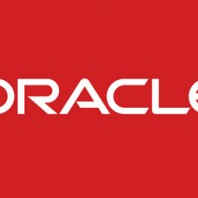Introduction to ERP
Enterprise Resource Planning (ERP) is a software system which integrates “multiple modules” to collectively contribute the enterprise business. Each of the “multiple modules” correspond to a unique and focused operational or business line. An ERP application bundles and integrates all such modules into a single product package. Some of the most common ERP modules are product planning, material purchasing, inventory control, distribution, accounting, marketing, finance, CRM and HR.
Based on the size of the enterprise, multiple ERP vendors operate actively in the market. ERP product vendors for large tier enterprises are SAP, Oracle, and Microsoft. Oracle Applications is the ERP product by Oracle to suffice the business requirements of large enterprises. For mid size companies, Oracle launched a separate product Oracle Accelerate which was launched in 2007. In this article, we shall take an overview of Oracle Applications.
Oracle Applications
Oracle Applications is an ERP application by Oracle Corporation which provides end to end business solution for an enterprise while maintaining a constant pace with the technology advancement. The product is named as Oracle E-Business Suite which offers comprehensive product lines, integrates business applications and industry applications. Oracle E-Business Suite is one of the most complete and versatile products which works cohesively to streamline various areas of business like sales, services, marketing, inventory, manufacturing, human resources, supply chain, and financial. Let us now have a look at some of the most commonly used functional modules of Oracle E-Business Suite.
Oracle Purchase and Accounts Payable deal with vendor purchases and financial dues. Oracle Inventory Management helps you to deal with the items in the stock or warehouse. Oracle HRMS provides a comprehensive solution for HR practices in the organization like employee data, portals, policies, and salary processing. Oracle Order Management and Receivables are the modules which deal with the orders placed by the customers and recovery. Oracle General Ledger is another crucial module which integrates the transactional modules together and initiates the financial processing. So we can deduce three key features of Oracle Applications as follows.
1. Master data integration – The core business entities like customer, employees, suppliers, items, etc are common across multiple applications within the product.
2. Transaction data integration – Transactional modules like Orders and Purchases are integrated.
3. Financial data integration – The financial data can be processed in a common cycle.
Oracle Apps Architecture and Data Model
Oracle Applications works on three tier architecture. The Client tier, Application tier, and Database tier constitutes the working architecture of the application.
The client or desktop tier carries the end user interface. The application tier contains forms server, reports server, iAS server, processing server, discoverer server, and administration server. The database tier contains the database server.
At the time of installation of Oracle E-Business Suite software, separate schema are created for the modules. In addition to the module specific schemas, special purpose schema namely APPS, APPLSYS, and APPLSYSPUB are created. The APPS schema is the public schema which contains the public synonyms of all the other schema in the database. The APPLSYS schema contains the FND (Foundation), ALR (Alerts), WF (Workflow), and AD (Apps DBA) objects. The APPLSYSPUB schema contains the public synonyms of all FND tables which are used for user verification.
Oracle Apps Terminology
There are certain terms which one must be familiarized with, when starting with Oracle Applications.
1. Responsibility – Role to access specific forms and programs in a particular module. It is a collection of menu (mandatory), request group, and data group (mandatory).
2. Menu – Collection of sub menus and functions
3. Request group – Collection of concurrent programs
4. Data group – Collection of modules for cross operations
5. Flex fields – Sub fields or segments. Two types
1. Key Flex fields – Normal text fields with proper caption to capture relevant business information
2. Descriptive Flex fields – Small sized fields to capture additional information
6. Value set – Collection of attributes like length, data type, min value, max value, and validation
7. WHO Columns – Columns which are used to track insert and update information in a table
References
Readers can continue further reading from the below links –
https://www.oracle.com/us/products/applications/overview/index.html
https://en.wikipedia.org/wiki/Oracle_Applications
https://www.oracle-base.com/articles/apps/articles-apps.php
https://www.exforsys.com/tutorials/oracle-apps.html
Video Tutorials
You can also follow video learning series on youtube –
https://www.youtube.com/user/FusionAppsAtOracle
https://www.youtube.com/watch?v=Yqo7Il6GoAo
https://www.youtube.com/watch?v=njyByQGKOPo
https://www.youtube.com/watch?v=ZfW72Iklyf8
https://www.youtube.com/watch?v=QImS8gIWTF4
You can find all the upcoming programs for Oracle Apps .
[lastupdated]

your trainings on oracle ERP is nice to hear about it and i hope people will interests in learning the oracle technology. Now oracle services are demanding in software industry. Hence its great to learn the oracle course.